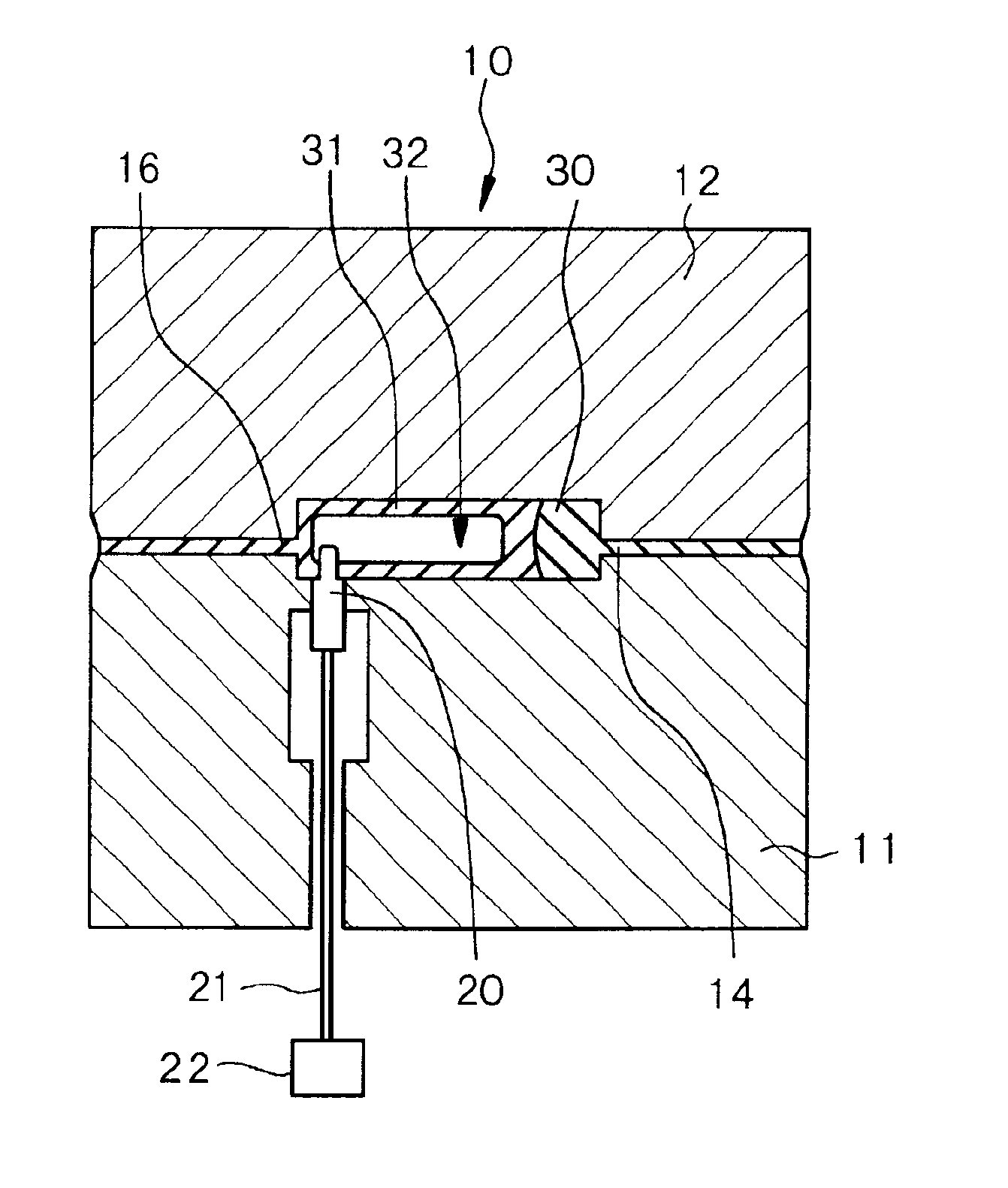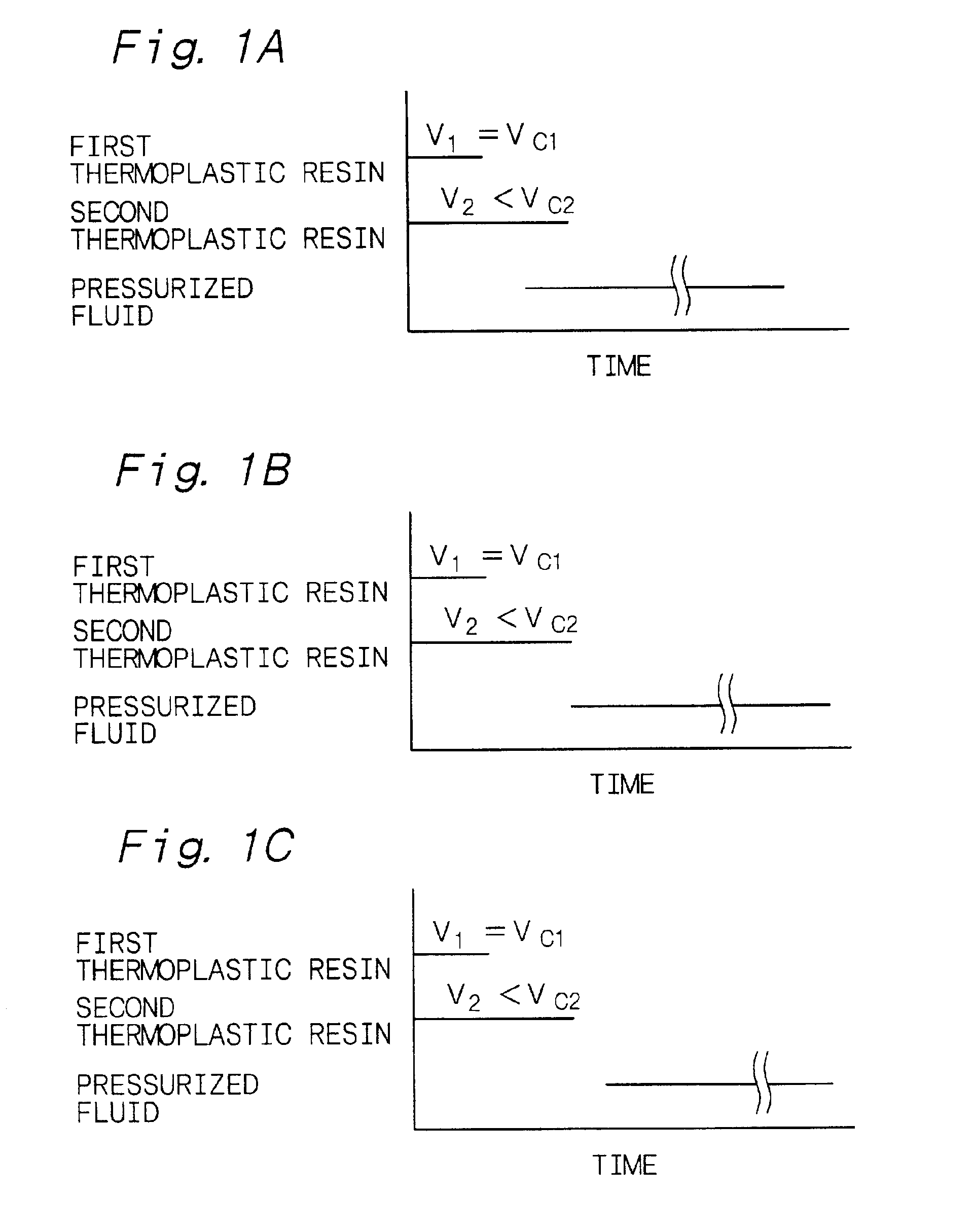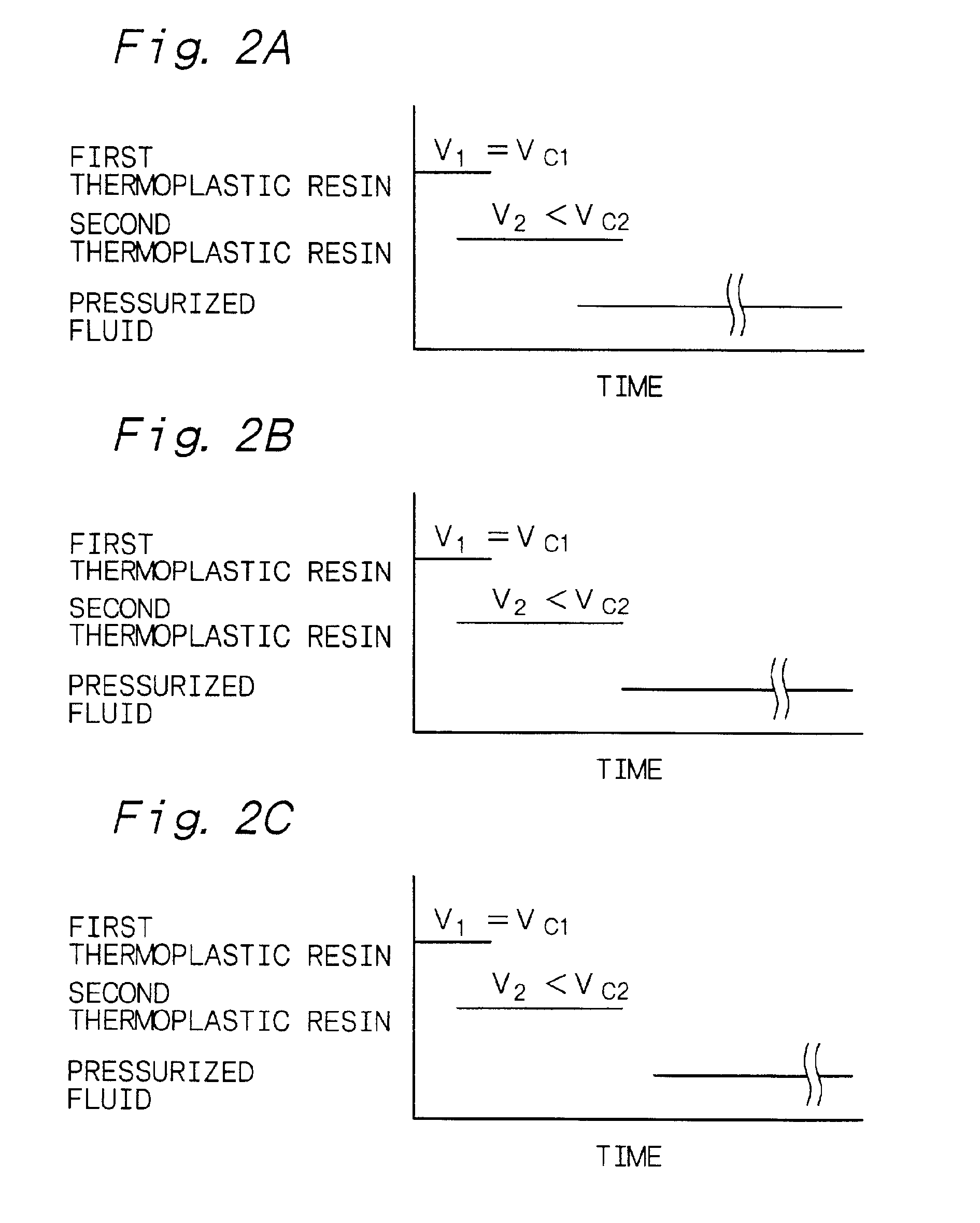Method for injection-molding an article having a hollow portion
a technology of injection molding and hollow parts, which is applied in the direction of dough shaping, manufacturing tools, food shaping, etc., can solve the problems of increased production cost, poor strength of the article, and complicated operation, and achieve accurate and easy control
- Summary
- Abstract
- Description
- Claims
- Application Information
AI Technical Summary
Benefits of technology
Problems solved by technology
Method used
Image
Examples
example 2
The injection-molding method of Example 2 is a variant of the injection-molding method of Example 1. In a step similar to [Step-120], the first thermoplastic resin was in a molten state when it came in contact with the second molten thermoplastic resin. In Example 2, the embodiment shown in FIG. 1B was employed as timings of the start and completion of an injection of the first molten thermoplastic resin and the second molten thermoplastic resin, and the start of an introduction of the pressurized fluid. Example 2 used the same injection-molding apparatus, the same first thermoplastic resin and the same second thermoplastic resin as those in Example 1.
[Step-200]
First, the first molten thermoplastic resin was injected into the cavity 13 from the first injection cylinder 15 through the first-molten-resin injection portion 14 in the same manner as in [Step-100] of Example 1. Concurrently with the start of injection of the first molten thermoplastic resin, the injection of the second mo...
example 3
Example 3 is concerned with the injection-molding apparatus having a partition member, provided by the present invention, and the second injection-molding method of the present invention. FIG. 19 shows a conceptual view of the injection-molding apparatus of Example 3. The injection-molding apparatus is the same as the injection-molding apparatus explained in Example 1 except that it has a movable partition member 40 and that the cavity 13 has a different form, so that a detailed explanation of the common features is omitted.
The partition member 40 is disposed in a portion of the cavity between a first cavity portion 13A that the first molten thermoplastic resin can occupy in the cavity 13 and a second cavity portion 13B that the second thermoplastic resin can occupy in the cavity 13. In Example 3, the partition member 40 is movable in directions in which it comes near to the second injection cylinder 17 and comes near to the first injection cylinder 15 by means of a hydraulic cylind...
example 4
Example 4 used an injection-molding apparatus that was the same as the injection-molding apparatus explained in Example 3 except that the surface of the partition member 40 which was to come in contact with the first molten thermoplastic resin was provided with a convexo-concave shape (undercut) as shown in FIG. 29A that is a schematic cross-sectional view obtained by cutting the partition member 40 with a plane at right angles with the longitudinal direction.
The injection-molding method of Example 4 is a variant of the injection-molding method of Example 3. The injection-molding method of Example 4 differs from that of Example 3 only in that a dwell time of 20 seconds under a pressure of 2.45×107 Pa (250 kgf / cm2-G) was secured after completion of the injection of the first molten thermoplastic resin in a step similar to [Step-300]. By securing such a longer dwell time, the first thermoplastic resin in the first cavity portion 13A was cooled, and as a result, a portion of the first ...
PUM
| Property | Measurement | Unit |
|---|---|---|
| thickness | aaaaa | aaaaa |
| temperature | aaaaa | aaaaa |
| temperature | aaaaa | aaaaa |
Abstract
Description
Claims
Application Information
 Login to View More
Login to View More - R&D
- Intellectual Property
- Life Sciences
- Materials
- Tech Scout
- Unparalleled Data Quality
- Higher Quality Content
- 60% Fewer Hallucinations
Browse by: Latest US Patents, China's latest patents, Technical Efficacy Thesaurus, Application Domain, Technology Topic, Popular Technical Reports.
© 2025 PatSnap. All rights reserved.Legal|Privacy policy|Modern Slavery Act Transparency Statement|Sitemap|About US| Contact US: help@patsnap.com



